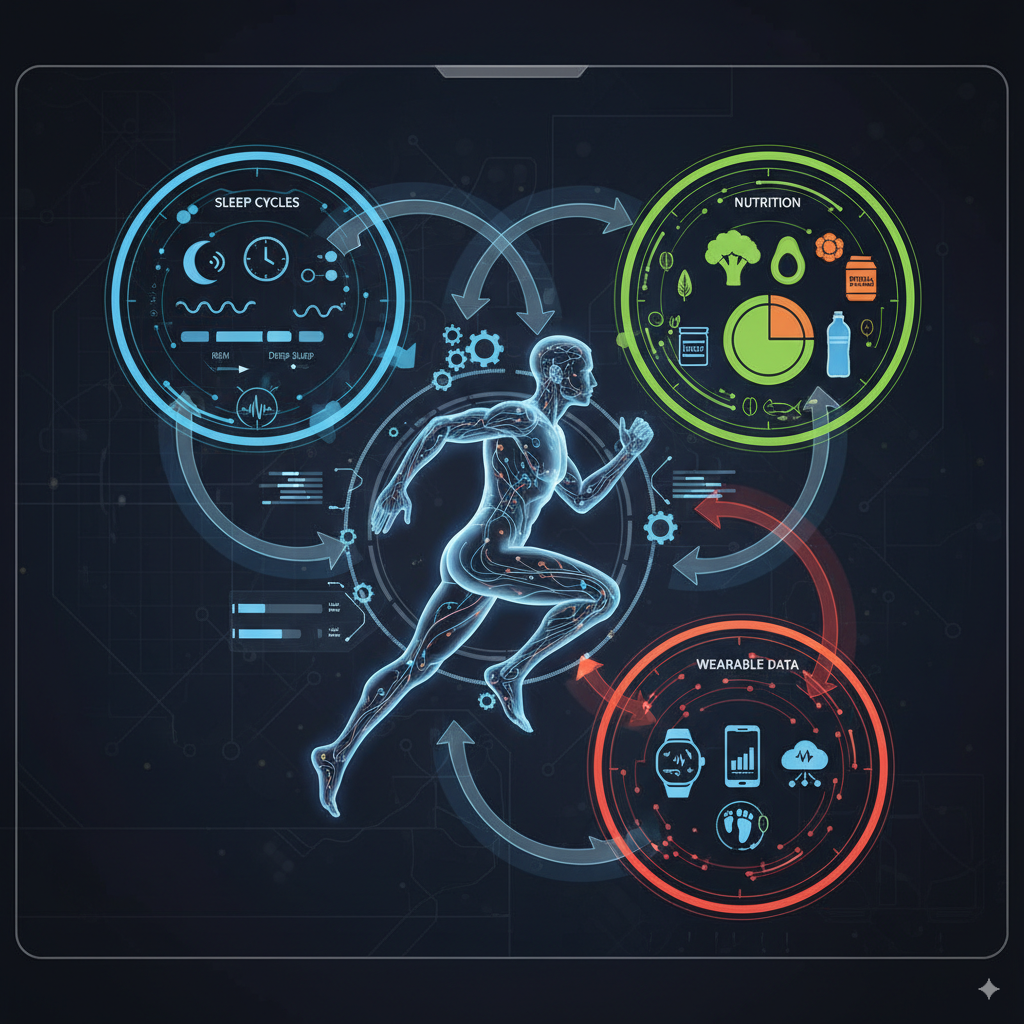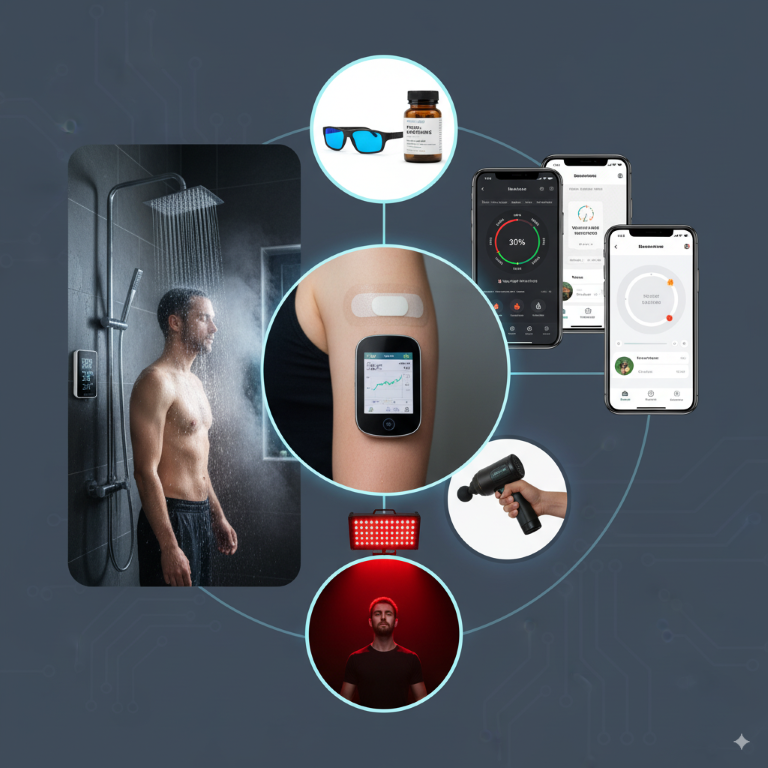Blog
Biohacking for Everyday Athletes: Simple Ways to Optimize Your Body

n 2025, biohacking has become a mainstream approach for everyday athletes looking to enhance performance, recovery, and overall health without extreme measures. By leveraging science-backed tweaks to diet, sleep, and routines, you can optimize your body's natural processes for better energy, strength, and longevity. As searches for "biohacking tips 2025" and "simple biohacks for athletes" rise, X-Fitt.com explores accessible strategies that fit busy lifestyles, helping you push limits safely and effectively.
Whether you're a weekend runner or gym enthusiast, biohacking empowers you to fine-tune your body like a pro. This guide covers the basics, top techniques, implementation steps, and more to get you started on optimizing your performance in 2025.
What Is Biohacking for Everyday Athletes?
Biohacking involves using data, lifestyle changes, and tools to optimize biological functions, from metabolism to cognition. For everyday athletes, it's about simple, evidence-based hacks like adjusting sleep or nutrition to boost recovery and performance, rather than advanced tech like stem cells. In 2025, it's tied to longevity trends, focusing on metabolic and cognitive enhancements through wearables and habits.
Unlike elite methods, everyday biohacking emphasizes affordability and accessibility—think breathwork over expensive IV drips. It draws from wellness trends like personalized supplementation and recovery tech, allowing you to track metrics like HRV (heart rate variability) for better training decisions.

Why Biohacking Is a Top Trend for Athletes in 2025
Biohacking's popularity surges in 2025 due to its role in longevity and performance optimization. Key drivers include:
- Personalized Optimization: Using AI and wearables for tailored nutrition and recovery, improving energy and reducing injury risk.
- Metabolic Health Focus: Tools like CGMs help monitor glucose for stable energy during workouts, a foundation for longevity.
- Cognitive Boosts: Hacks enhance focus and mental resilience, crucial for athletes facing training plateaus.
- Recovery Emphasis: Techniques like cold exposure and red light therapy speed up healing, aligning with sauna culture and watershed wellness trends.
- Accessibility: Affordable tips like walking and fasting make it inclusive, with the market growing due to chronic illness awareness.
Industry reports predict biohacking will redefine wellness, blending tech with natural habits for sustainable gains.
Top Simple Biohacking Techniques for Everyday Athletes
Here are five beginner-friendly biohacks for 2025, selected for their ease, science backing, and impact on athletic performance:
- Sleep Optimization: Prioritize 7-9 hours with consistent schedules and dark environments. Use apps to track cycles and adjust for better recovery. Great for muscle repair and hormone balance.
- Intermittent Fasting: Eat within an 8-10 hour window (e.g., 10 AM-6 PM) to boost metabolism and fat burning. Ideal for weight management and energy stability during training.
- Cold Exposure: Start with cold showers (30-60 seconds) or ice baths to reduce inflammation and improve circulation. Enhances resilience and post-workout recovery.
- Breathwork Exercises: Practice 4-7-8 breathing (inhale 4s, hold 7s, exhale 8s) for stress reduction and focus. Perfect before workouts to optimize oxygen use.
- Red Light Therapy: Use affordable LED devices for 10-15 minutes daily to aid muscle recovery and reduce soreness. Emerging for joint health in athletes.
Incorporate these gradually; studies show they can improve performance by 10-20% when combined.

How to Start Biohacking Your Body: A Step-by-Step Guide
Begin with basics to avoid overwhelm. Here's a practical plan for everyday athletes:
Step 1: Assess Your Baseline
Track current metrics using a wearable (e.g., from our previous guide). Note energy levels, sleep quality, and recovery times.
Step 2: Choose 1-2 Hacks
Start with sleep and fasting. Example: Set a 10 PM bedtime and skip breakfast until noon.
Step 3: Integrate into Workouts
Build a weekly routine:
- Monday: Strength + Breathwork – 45-min weights followed by 5-min breathing for focus.
- Wednesday: Cardio + Cold Exposure – Run, then end with a cold shower for recovery.
- Friday: Flexibility + Red Light – Yoga with therapy session post-workout.
- Sunday: Review + Fast – Analyze data and plan a 16-hour fast.
Step 4: Monitor and Adjust
Use apps to track progress. Adjust based on feedback, like extending fasting if energy improves.
Pro Tip: Hydrate well and consult a doctor before starting, especially with fasting.
Potential Drawbacks and How to Overcome Them
Biohacking is powerful but has pitfalls:
- Overdoing It: Extreme fasting can lead to fatigue; solution: Start slow and listen to your body.
- Cost: Advanced tools add up; stick to free hacks like walking or breathwork.
- Misinformation: Not all trends are proven; rely on evidence-based sources.
- Health Risks: Cold exposure may stress the heart; warm up gradually.
Balance with rest days and professional advice for safe optimization.
The Impact of Biohacking on Mental Health and Long-Term Performance
Biohacking supports mental resilience by reducing stress through breathwork and improving sleep, key for athletes' motivation. In 2025, cognitive hacks like nootropics enhance focus, while metabolic tweaks prevent burnout.
Long-term, it promotes longevity by optimizing recovery, potentially adding years of active life.
Final Thoughts: Optimize Your Body with Biohacking Today
Biohacking in 2025 offers everyday athletes simple tools to elevate performance and health. By starting with basics like sleep and cold exposure, you can achieve lasting gains. Try one hack this week and track the difference!
Explore more on X-Fitt.com, like our "Wearable Tech" guide, or join our newsletter. What's your go-to biohack? Share below!
